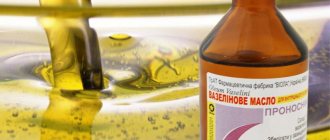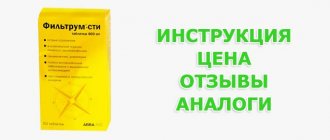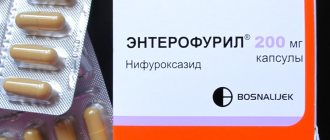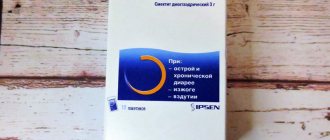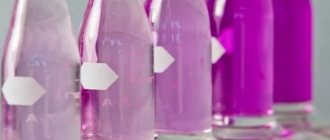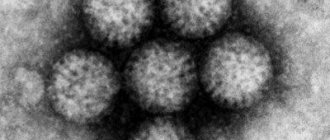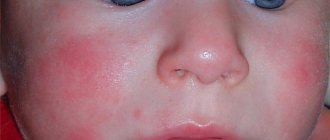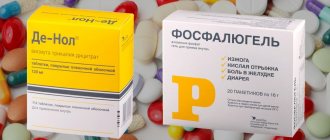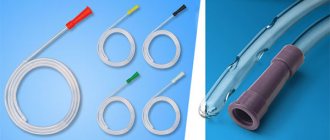In case of poisoning, doctors recommend taking medications that neutralize poisons and toxins in the intestines and remove them out. One such medicine is Smecta powder. This drug is unique in its own way. According to the pharmacological classification, it belongs to the group of antidiarrheals, that is, it is prescribed primarily for the symptomatic treatment of diarrhea.
The powder has an enveloping and adsorbing effect, neutralizing toxins and other substances harmful to the body in the intestinal lumen. What does Smecta help with, in what doses is it taken in case of poisoning, and does it have any contraindications?
What does Smecta help with?
The drug "Smecta" (international name - Diosmectite) is a clay powder of natural origin. The substance is extracted from natural rocks - aluminosilicates. Dioctahedral smectite has a specific molecular structure, due to which it has a selective absorbing effect. It adsorbs toxins and poisons, the molecules of which are of medium size, and does not remove vitamins and minerals from the body.
The effect of “Smecta” in case of poisoning is as follows.
- Absorption of poisons, toxins, pathogenic bacteria and their toxic waste products, food allergens, and medications by the surface of the diosmectite molecule.
- Removing excess gases due to bloating.
- Enveloping effect by improving the quality of intestinal mucus. Thanks to this, the irritating effect of poisons on the intestinal wall is reduced, diarrhea stops and pain is relieved.
Composition of Smecta and mechanism of action in case of poisoning
The French manufacturer produces the drug in the form of a powder, packaged in metallized foil bags. Its active ingredient is diosmectite, included in the clinical and pharmacological group of enterosorbents. The auxiliary composition includes sodium saccharinate, dextrose monohydrate, and flavorings. Additional components serve as taste improvers and ensure optimal absorption of diosmectite.
Smecta is often used for food or medication poisoning due to the ability of the main ingredient to attract harmful substances. It binds them on its surface and then evacuates them from the body during bowel movements. This allows you to quickly cleanse the gastrointestinal tract of undigested food debris, pathogenic bacteria and viruses, and toxins.
Smecta also has other pharmacological properties:
- when dissolved in water, it forms a suspension that gently envelops the walls of the stomach and intestines. It protects the mucous membrane from the negative effects of hydrochloric acid, pathogenic microorganisms, the toxins they produce and other aggressive factors;
- prevents the active growth of pathogenic bacteria by neutralizing them and removing them with feces;
- retains the moisture the body needs so much during poisoning, indirectly stabilizing the water-electrolyte balance.
Even 2-3 times of taking Smecta for food poisoning in adults and children contributes to a significant improvement in well-being. The number of urges to defecate is reduced, nausea is reduced, and appetite is gradually restored.
Is it possible to drink Smecta if poisoned?
The medicine is used in the following cases:
- acute and chronic diarrhea of any origin;
- infectious diseases accompanied by digestive disorders;
- heartburn;
- increased gas formation in the intestines.
Is it possible to drink Smecta if you are poisoned? Yes, if the toxic product entered the body through the stomach. At the same time, contraindications to the use of the drug are taken into account. “Smecta” for poisoning is especially effective if the disease is manifested by a digestive disorder associated with the development of opportunistic microflora (for example, in food poisoning from stale foods).
Operating principle of Smecta
Preparations based on diosmectite have an average sorption capacity of about 100 mg/g. This is higher than traditional activated carbon. But smecta can boast of an additional effect - it envelops the mucous membranes of the digestive tract, promotes their regeneration and relieves irritation. The sorbent creates a thin protective layer that protects the intestinal walls from further attack by toxic substances.
This medication is not absorbed into the blood, but works only in the gastrointestinal tract. Therefore, smecta is allowed for young children from the first day of life, as well as for pregnant and lactating women. Smecta is used to treat:
- acute and chronic diarrhea;
- flatulence;
- heartburn;
- food poisoning;
- infections accompanied by indigestion;
- acute intestinal colic.
In Russian pharmacy chains, a medicine from the French company Ipsen Pharma is sold under the brand name smecta. It is a grayish-white or pale yellow crystalline powder. Additional ingredients include sodium saccharinate, dextrose monohydrate and vanilla or orange flavoring. This dosage form has several advantages:
- the powdered drug begins to act already in the stomach;
- the suspension is absorbed faster by the body than tablets;
- The sweetish taste and pleasant aroma make it possible to give medicine to even a capricious child.
The powder is packaged in single sachets of 3 g. Before use, the contents of the package are dissolved in warm water or in any semi-liquid product - porridge, juice, fruit puree. Recently, a new form of smecta has appeared - a ready-made suspension with caramel flavor. There is no need to dissolve it in water, just drink the contents of the tube.
Smecta dosage for poisoning
Smecta has an antidiarrheal effect in case of poisoning. Usually, if stool disorder is caused by severe intoxication, it cannot be eliminated with the help of medications: this will increase the concentration of poisons in the body and worsen the patient’s condition. But smecta acts in a different way - it does not directly affect intestinal motility, but reduces the activity of toxins and pathogenic microorganisms that cause inflammation of the mucous membrane. Therefore, using smecta to stop diarrhea caused by eating low-quality and stale products is not only possible, but also necessary.
The use of smecta in case of poisoning is advisable regardless of the type of toxic substance. It helps to cope with the waste products of a variety of pathogenic microorganisms - fungi, viruses, protozoa, gram-negative and gram-positive bacteria. It is also effective in cases of poisoning with drugs, heavy metal salts, and household pesticides. However, the severity of the patient’s poisoning should be assessed: sometimes one sorbent may not be enough to remove all poisons from the body. If a patient experiences uncontrollable vomiting due to poisoning, high fever, nervous disorders, and there are spots of blood in the stool, calling a doctor is mandatory.
The contents of one package are dissolved in warm water - 50 ml for children, 100 ml for adults. The optimal temperature is no higher than 30–35 degrees. In case of poisoning in children, smecta can also be diluted in liquid food; the main thing is that the dish or baby formula is not too hot.
Use of Smecta for food poisoning
To make it easier for consumers to understand how smecta is used for poisoning, the manufacturer’s instructions indicate the recommended dosage for poisoning for adults:
- 6 sachets per day – for acute disorder;
- 3 sachets during the day - for all other indications.
In case of poisoning, smecta is taken after preliminary cleansing of the stomach or intestines. This helps reduce the amount of toxic substances and speed up the patient’s recovery. Therefore, in case of poisoning, the patient is deliberately induced to vomit, the intestines are washed with a saline laxative, and then the remaining poison is removed with a sorbent. Subsequently, the suspension is consumed before meals or in between meals. To eliminate heartburn, do the opposite - take the sorbent after a meal.
If within half an hour after taking smecta an attack of vomiting begins, you need to wait until the urge disappears. Then you need to prepare a new suspension and drink it.
The average duration of treatment for poisoning is from 3 to 7 days. It is undesirable to stop taking it immediately after the first symptoms of poisoning disappear, since some of the toxins will remain in the body and can cause harm to it.
Smecta in case of food poisoning does not exclude the need for additional therapy. The patient, regardless of his condition, must be provided with increased fluid intake. There are several reasons for this:
- due to vomiting and diarrhea, the body rapidly loses moisture;
- Some of the poisons are excreted along with urine, so drinking plenty of fluids will speed up this process.
How to take Smecta for food poisoning
“Smecta” is used for food poisoning if diarrhea develops. It does not matter whether the food was of poor quality or the body reacted with an allergic reaction to an unfamiliar product. This medicine is often taken with you when traveling to exotic countries - it helps perfectly with diarrhea that develops from a change in diet. The medicine stops diarrhea, relieves discomfort in the abdomen, and removes excess gases from the intestines.
How to take Smecta in case of poisoning?
- The contents of 2-3 sachets are mixed in half a glass of water and drunk after meals.
- The maximum daily dose for adults is 9 sachets.
- Take three times a day with equal intervals.
- The course of treatment is 3–5 days, sometimes within a week. The drug is taken until signs of indigestion (diarrhea, heartburn, bloating) disappear.
This medicine is not only taken for food poisoning, it can be used for other cases as well.
Rules for the treatment of digestive disorders
For quality treatment of digestive disorders, it is necessary to identify the exact root cause causing the disorder. Smecta helps cope with the following symptoms:
- diarrhea of various origins;
- vomiting and diarrhea;
- bloating;
- food intoxication;
- allergic reactions that manifest themselves in the form of stool disorders;
- heartburn;
- abdominal pain.
Before starting to take diosmectite, it is recommended to consult a doctor and study the instructions for use. The powder is packaged in portions in sachets. The maximum daily dose for an adult for acute health problems is up to 6 packets per day.
After a single dose of the medicine, the patient usually feels relief within 30-40 minutes. How long to take the drug: the duration of the course of therapy is no more than 1 week. If during this time Smecta does not help, it is necessary to reconsider the treatment regimen.
Does Smecta help stop vomiting and eliminate nausea?
Smecta for nausea can be used in patients with attacks of vomiting without additional severe disorders in the form of blood discharge, a sharp increase in body temperature, or dehydration. The described symptoms are an indication for emergency medical care and refusal of self-medication.
Diosmectite has a number of benefits that help cope with the symptoms of food poisoning:
- selective sorption effect;
- smooth surface of absorbent particles that do not injure the intestinal mucosa;
- enveloping effect;
- high tolerance.
The drug can be given to young children and nursing mothers. The medicine helps to cope not only with nausea and vomiting, but also with diarrhea, flatulence, and heartburn.
Methods of treating vomiting with Smecta
If vomiting is caused by food poisoning before taking Smecta, you must follow the recommendations:
- rinse the stomach: most of the toxic substances will be released along with the vomit; the drug will act faster on an “empty stomach”;
- do not exceed the permissible daily and single dose. An overdose provokes constipation; if the body stops removing toxic substances, the patient’s general condition may worsen;
- treatment with diosmectite is carried out along with compliance with the drinking regime and taking medications for dehydration (Regidron);
- the finished suspension of Smecta cannot be stored;
- if the patient cannot use Smecta, and its use only aggravates the symptoms of nausea and vomiting, another sorbent can be used as an emergency. Enterosgel, Polysorb, Activated carbon are suitable;
- diosmectite does not affect the human microbiome, however, treatment of nausea and vomiting is often carried out in combination with probiotics: Hilak Forte, Laktofiltrum, Linex.
If the patient has an inflamed mucous membrane of the esophagus, Smecta is taken after meals, in all other cases - before meals. Any medications should be taken no earlier than a few hours after using diosmectite.
Dosages for nausea
At the first signs of nausea, use 3 packets every few hours. If the patient begins to vomit immediately after using the medication, the dose is repeated. People with acute conditions are recommended to take 6 sachets per day. The contents of the package are diluted in water and drunk immediately, without waiting for sediment to form. The average daily dose for adults is 9 grams of medication. If the use of diosmectin is not enough, it is necessary to select other medications for symptomatic therapy.
Smecta for food poisoning
In case of food poisoning and indomitable repeated vomiting, it is recommended to use other groups of medications. Smecta absorbs and removes toxic elements, but does not prevent dehydration of the body, so additional dehydration therapy is mandatory.
Maximum daily dosages and duration of treatment with Smecta
The maximum daily dose for adults is 18 grams of diosmectin per day. Patients with intolerance or allergy to the components of white clay are recommended to reduce the dose or select another replacement product.
Smecta is an over-the-counter drug, but it should not be used for self-medication. It is necessary to objectively assess the clinical picture, monitor the patient’s well-being and promptly seek professional medical help.
Use of Smecta for alcohol poisoning
"Smecta" in case of alcohol poisoning can be taken for preventive purposes or to treat hangover syndrome. The drug removes alcohol from the intestines, thereby reducing its entry into the blood, and the breakdown products of ethyl alcohol.
- To reduce the effect of intoxication, take 2-3 bags of Smecta immediately before the feast.
- To prevent the development of hangover syndrome, the drug is taken after drinking alcohol.
- If after taking the drug there was vomiting within half an hour, then Smecta is drunk again in the amount of 2 sachets.
- In case of poisoning with low-quality alcoholic products, induce vomiting, then take 3 sachets of Smecta.
In case of poisoning with alcoholic products of suspicious origin, if symptoms of severe poisoning develop, you need to call an ambulance.
Smecta analogues and drug compatibility
Enterosgel
Among the drugs that can be called analogues, there are a number of very effective drugs that provide a lasting therapeutic effect for poisoning of various types:
- Enterosgel - this drug is contraindicated for people with intestinal atony;
- Diosmectite - the drug is not recommended for use in case of intestinal obstruction;
- Hilak Forte - not indicated for hypersensitive patients;
- Lactoglobulin is contraindicated in persons with intolerance to cow's milk;
- Atoxil is contraindicated in children under one year of age, during pregnancy and breastfeeding.
Read
About the signs of alcohol intoxication and withdrawal from it
Smecta should be used separately from other drugs, since it has an adsorbing ability; the drug will negatively affect the effectiveness of other drugs and complicate their absorption. Therefore, the difference between taking pills or mixtures should be at least a couple of hours. The effectiveness of Smecta has been tested by time, and even new generation drugs cannot always compete with it. The ability of the medicine to quickly relieve symptoms of food poisoning, dietary errors, help with poisoning from alcohol surrogates or hangovers, and be used in pediatric therapy makes it popular and helps maintain a leading place in the list of enterosorbents.
How to give Smecta for poisoning in children
"Smecta" in case of poisoning in children is used to eliminate the symptoms of digestive disorders - diarrhea, bloating, as a one-time measure for dyspeptic symptoms (stomach disturbances). In terms of its adsorption capacity, the drug is somewhat inferior to other new generation enterosorbents (Enterosgel, Polyphepan) and will more slowly remove toxins from the intestines. But “Smecta” has an enveloping effect, which has a beneficial effect on the inflamed intestinal wall, so this medicine has a more pronounced antidiarrheal effect. In general, “Smecta” is preferable to use in case of food poisoning and poisons that strongly irritate the intestinal mucosa; other sorbents are used in case of accidental ingestion of poisons and drugs.
"Smecta" for poisoning: instructions for use in children. For acute diarrhea, the medicine is prescribed in the following dosages.
- Up to one year of age - 2 sachets per day. Divide the medicine into three doses, diluting the powder immediately before use in a small amount of water (about 50 ml) or liquid food.
- From 1 year to 2 years - 4 sachets per day.
- After three days, if further use of the drug is necessary, the dose is reduced by half.
When used for other indications, the dose for children under one year of age is 1 sachet per day, at the age of 1–2 years - 2 sachets, over 2 years - up to 3 sachets per day. For children, they produce special variations of “Smecta” with orange or strawberry flavors.
How to use for children
The drug is a common type of help for children with various poisonings. Smecta can be consumed from a very early age if the correct dosage is followed. It has a positive effect on intestinal infections, fighting various manifestations of food poisoning. The advantage of the medicine over all others is that the microflora in the intestines is not inhibited.
For children, smecta is diluted with water, mixture or tea at the rate of 50 ml of liquid per 1 sachet and given as follows:
- For babies under one year of age, 1 sachet per day for three days. If signs of poisoning continue to persist, then you can continue to give the drug, but not more than 7 days. The diluted suspension is given in an amount of 5 ml every 15 minutes.
- Children from one to two years old can be given 1-2 sachets using the scheme described above. For older children - up to 3 sachets per day. On the third day, the dosage is reduced.
Contraindications and side effects
This medicine has its own contraindications for use. Can pregnant women take Smecta if they are poisoned? Yes, you can. The drug has no restrictions on the patient’s age and is approved for pregnant and lactating women. It does not affect the condition of the fetus and does not change the composition of breast milk, since it is absolutely not absorbed from the intestines into the blood.
Contraindications for use may include some disorders of intestinal motility and carbohydrate metabolism diseases:
- mechanical intestinal obstruction;
- sucrase-isomaltase deficiency;
- fructose intolerance;
- impaired absorption of glucose-galactose.
Use the medicine with caution if you are prone to constipation. In case of overdose, it is possible to develop constipation, which disappears after adjusting the dose of the drug.
The drug "Smecta" is effective in cases of poisoning accompanied by the development of acute diarrhea. The medicine has the ability to absorb toxins and poisons, bringing them out, and, in addition, has an enveloping effect. This distinguishes Smecta from other intestinal sorbents. It can be taken for increased gas formation in the intestines and heartburn, for alcohol poisoning and indigestion as a result of a change in the usual diet. This medicine has no age restrictions; it is prescribed to infants, pregnant and lactating women.
Regimen for taking Smecta for various forms of intoxication
Compliance with the instructions for use of Smecta in case of poisoning by adults and children will help to avoid negative manifestations from the body. When calculating doses, the doctor takes into account the type of intoxication, the severity of symptoms, and the general health of the victim. He also focuses on the presence in the clinical picture of the main signs of poisoning - vomiting and frequent loose stools.
Smecta is good for poisoning with spoiled food - meat and fish, confectionery and sausages. It is given after cleansing the stomach of food debris. Frequency of administration - up to 3 times a day. Be sure to use the drug before bedtime. This will prevent you from waking up at night from the urge to vomit and have bowel movements.
According to the annotation, drinking Smecta for food poisoning is necessary in the following dosages:
- for children under 12 months - one sachet per 100 ml of liquid;
- up to 2 years - two sachets of powder per glass of liquid per day;
- from 24 months - two or three sachets per 300 ml of liquid;
- for adolescents and adults - 3 sachets daily, divided into three doses.
For acute diarrhea, which is difficult to treat, this amount of medicine is doubled by the doctor. Three days after you feel better, return to the usual dosage regimen. The duration of the therapeutic course is no more than 10 days.
If you cannot stop diarrhea with Smecta, you should seek medical help. You may need to take more powerful antidiarrheal drugs, such as Loperamide.
Smecta is used quite often for poisoning and vomiting in an adult or child with chemicals. But with this type of intoxication, inducing vomiting is strictly prohibited. Especially in case of poisoning with acids, alkalis, or household chemicals. When expelled, they can irreversibly burn the esophagus and injure the mucous membranes of the nasopharynx. Using Smecta will help minimize the consequences of chemicals in the stomach.
With this form of intoxication, you must immediately take a double dose of powder dissolved in water. The suspension absorbs chemical compounds, rendering them harmless. Then, after detoxification therapy, Smecta should be used according to the standard regimen.
Smecta also helps with nausea caused by drinking a large portion of alcohol the day before. Its active ingredient accelerates the evacuation of ethanol and its toxic metabolites, including acetaldehyde, from the body. To eliminate hangover symptoms, you need to take 2 sachets at once, dissolving their contents in 200 ml of cool water. It is advisable to use Smecta at this dose 2 more times during the day.
Use during pregnancy
Smecta is approved for use throughout
and is taken for the same indications as for children, non-pregnant women or men. Dosages of Smecta for pregnant women correspond to those for adults, that is, in case of acute diarrhea, in the first three days you should take 2 sachets 3 times a day, and then for another 2 - 4 days, reduce the dosage by half (that is, 1 sachet per 3 times a day). For all other indications, Smecta is taken 1 sachet 3 times a day for 3 to 7 days.
What are the contraindications?
Answering the question: “Can Smecta be given to a child who is vomiting?”, you need to find out what triggered the attack. It is not always possible to take the drug. Contraindications are:
- Intestinal obstruction.
- Enzymatic deficiency of isomaltase and phosphofructaldolase (enzymes necessary for normal digestion).
- Hypersensitivity to any of the components of the drug.
For intestinal obstruction, Smecta is not prescribed due to the fact that it slows down the already poor passage of feces. Ultimately, taking the drug can lead to disruption of the integrity of the intestinal wall and subsequent peritonitis.
In case of enzymatic deficiency, the drug is contraindicated due to the fact that the composition contains simple sugars. If they enter the body of a child who is intolerant, for example, to fructose, the concentration of glucose in the blood drops sharply, i.e. dangerous hypoglycemia develops.
